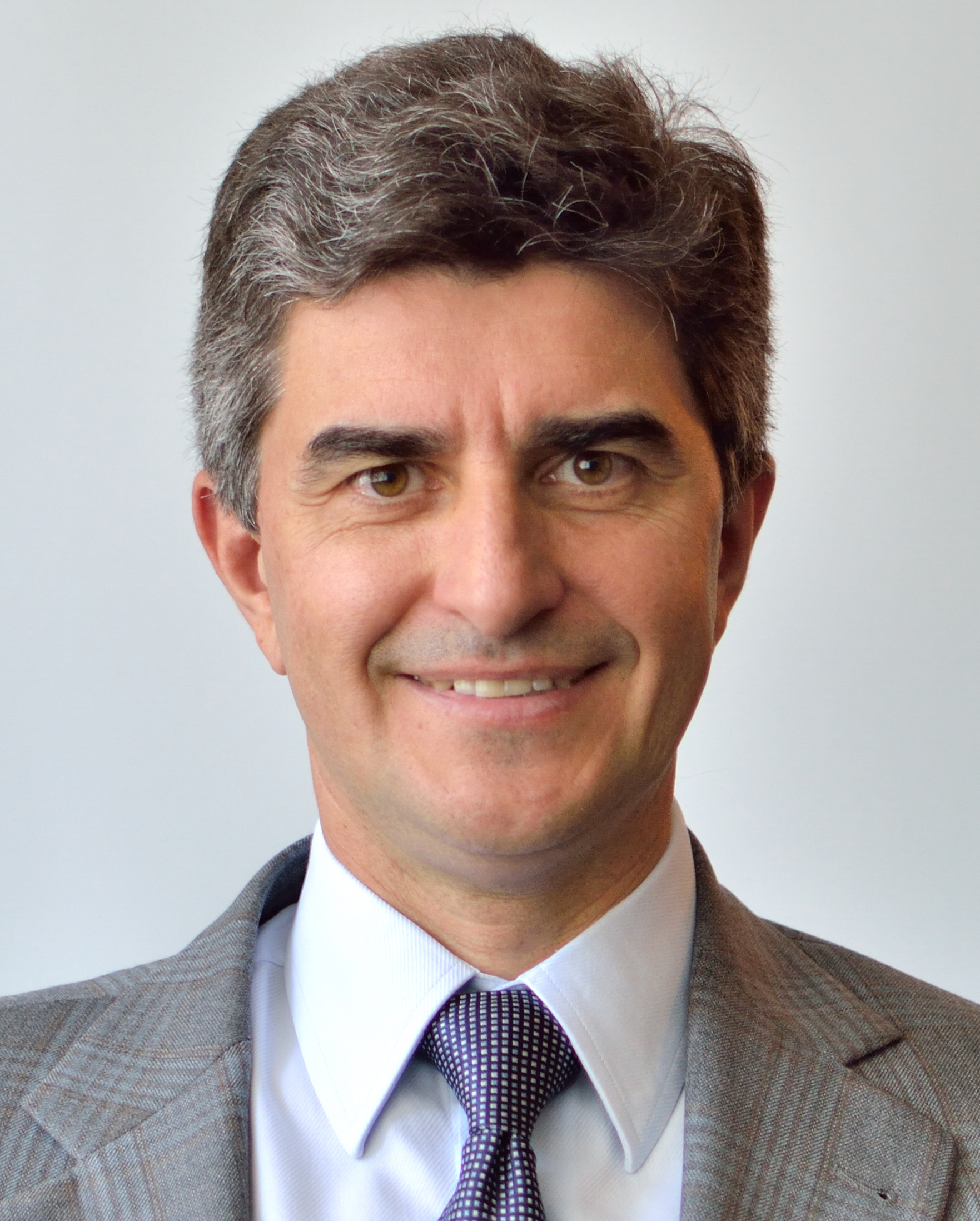
The MRS Board of Directors is the governing body of the Materials Research Society, responsible for establishing policy, monitoring progress of the Society toward its long-term goals, and setting the strategic directions for the major activities of the Society, including its meetings, publications, interactions with government agencies, and cooperative efforts with other professional societies throughout the world.
If you are a member of MRS, you can vote to support Prof. Yury Gogotsi as a candidate for the MRS Board of Directors!
Yury Gogotsi is currently distinguished university professor and trustee chair in the department of materials science and engineering at Drexel University. He also holds courtesy appointments in the departments of chemistry and mechanical engineering & mechanics at Drexel University. He is the founding director of the A.J. Drexel Nanomaterials Institute and associate editor of ACS Nano. He served as associate dean of the College of Engineering from 2003 to 2007. He received his Ph.D. in physical chemistry at Kiev Polytechnic Institute, Ukraine, in 1986, and a D.Sc. in materials engineering from the National Academy of Science, Ukraine, in 1995.
Gogotsi has been active in MRS for more than 20 years. He has been the organizer for various MRS symposia (2014 De Novo Carbon Nanomaterials II Symposium, 2009 Symposium on Materials Challenges Facing Electrical Energy Storage, and others), delivered numerous invited talks and was selected for the prestigious Fred Kavli Distinguished Lectureship in Nanotechnology in 2014. Much of his involvement was focused on students. He was the founding advisor of the MRS Student Chapter at Drexel. Moreover, he has advised some of the top students who have been awarded MRS Gold (M. Lukatskaya, 2015, and M. Naguib, 2014 are the most recent recipients) and Silver Graduate Student Awards, as well as two of three Arthur Nowick award winners (K. Jost, inaugural award in 2012, and K. Hatzell, 2014). He served as chair of the MRS Student Chapters subcommittee in 2011-2015, increasing the total number of student chapters from about 60 to over 90, and introducing international chapters (16 total).
Gogotsi has been elected a fellow of MRS, American Ceramic Society, American Association for the Advancement of Science (AAAS), The Electrochemical Society, as well as Academician of the World Academy of Ceramics and Full Member of the International Institute for the Science of Sintering. He has authored/co-authored two books, more than 450 peer-reviewed papers, edited 13 books and obtained more than 50 patents. His research has been recognized with a European Carbon Association Award, S. Somiya Award from the International Union of Materials Research Societies, Ross Coffin Purdy and Roland B. Snow Awards from the American Ceramic Society, R&D 100 Awards from R&D Magazine and other national and international prizes. He was recognized as Highly Cited Researcher by Thomson-Reuters in 2014.
Yury’s current research interests focus on chemistry of nanostructured carbons (nanotubes, onions, graphene, nanodiamond and carbide-derived carbons) and carbides. He was a part of the team that discovered a new family of 2D carbides, nitrides and carbonitrides of transition metals (MXenes). He explores the use of those materials in capacitive energy storage, from a large scale (electrochemical flow capacitor that he invented) to knitted garments and micro-supercapacitors. His work on selective extraction synthesis of carbon and carbide nanomaterials with tunable structure and porosity led to improved understanding of fundamental behavior of ions in confinement. Demonstration of ions desolvation in subnanometer pores of carbon and intercalations capacitance in slit pores of two-dimensional metal carbides outlined a path to development of supercapacitors with drastically improved performance. He led many multi-investigator research projects, collaborated and published with scientists from more than 20 different countries and has been working closely with many colleagues in academia, industry and national laboratories in the U.S.
Candidate’s Statement
I joined the society when I was a postdoc. I attend MRS Spring and Fall meetings every year and always bring several members of my research group to those meetings. Becoming a Board member would allow me to be more directly engaged in charting the future of MRS and working with its leadership to ensure that my favorite Society remains a vibrant, constantly growing and forward-looking community of materials researchers. If elected to serve as a Board member, I’ll help MRS to achieve:
- Further expansion and strengthening of the global network of student chapters. The vision of MRS is to build a dynamic, interactive, global community of materials researchers. This requires engagement of the new generation of materials researchers. Current students, postdocs and young investigators are the future of MRS. There is no better way of building the membership and engaging young members than through MRS student chapters. There should be no university with a materials science program in the US without an MRS chapter. Student members define the future of the society. We want students to join MRS when they start learning about materials and stay for the duration of their career in the materials field. Let’s keep our Society forever young!
- Building a global outlook. MRS is an organization of materials researchers worldwide, as its mission statement says. Fulfilling this mission requires involvement of materials researchers worldwide into MRS activities, committees and conferences. More than 40% of the society is composed of international members. In addition, many graduate students and postdocs registered as U.S. members came to US universities from abroad. The society should not loose contact with them if they leave the country after graduation. They should become MRS ambassadors, recruiting new members, starting MRS student chapters and making MRS the leading professional organization of materials researchers worldwide. The society must continue to support and develop its global membership and to bring global perspective to its U.S. members. More and more U.S. born and educated material scientists go abroad every year and we need to encourage them to become MRS representatives in other countries and help MRS to interact with national Materials Research Societies and other professional organizations in the field.
- Embracing new areas of materials research. New materials, techniques and applications emerge every year. MRS has been doing an excellent job by adjusting symposia listing at meetings to reflect changes in our dynamic field. Bringing thousands of researchers working on graphene and other 2D materials to MRS may drastically increase the membership of the society. Missing the next trend in the materials field may lead to thousands of scientists joining another professional organization that acts faster than MRS, and many of them may not come back. The challenge facing MRS is how to stay ahead of the curve, lead expansion of new directions in materials research rather than catch up. What is beyond 2D and bio-nano? MRS enlists the best and brightest minds in the field, but a leadership role of the Board is very important here. Board members should listen to ideas coming from members of the Society, monitor developments of the field and be willing to react quickly by launching new initiatives and delivering new products (meetings, publications, etc.). Being visionary and dynamic is a Core Value of MRS and I’ll be delighted to help the Society with implementing its vision as a member of the Board.
You can read more, vote and influence the future of the Society and the materials research profession here.




 Exellent news, our joint patent application with Drexel University on highly porous MAX phase precursor for MXene synthesis published. Congratulations and thanks to all team involved!
Exellent news, our joint patent application with Drexel University on highly porous MAX phase precursor for MXene synthesis published. Congratulations and thanks to all team involved! Last Call! Have you submitted your abstract for IEEE NAP-2025 yet? Join us at the International Symposium on "The MXene Frontier: Transformative Nanomaterials Shaping the Future" – the largest MXene-focused conference in Europe this year! Final Submission Deadline: May 15, 2025. Don’t miss this exclusive opportunity to showcase your research and engage with world leaders in the MXene field!
Last Call! Have you submitted your abstract for IEEE NAP-2025 yet? Join us at the International Symposium on "The MXene Frontier: Transformative Nanomaterials Shaping the Future" – the largest MXene-focused conference in Europe this year! Final Submission Deadline: May 15, 2025. Don’t miss this exclusive opportunity to showcase your research and engage with world leaders in the MXene field! We are excited to announce the publication of latest review article on MXenes in Healthcare. This comprehensive review explores the groundbreaking role of MXenes—an emerging class of 2D materials—in revolutionizing the fields of medical diagnostics and therapeutics. Read the full article here: https://doi.org/10.1039/D4NR04853A.
We are excited to announce the publication of latest review article on MXenes in Healthcare. This comprehensive review explores the groundbreaking role of MXenes—an emerging class of 2D materials—in revolutionizing the fields of medical diagnostics and therapeutics. Read the full article here: https://doi.org/10.1039/D4NR04853A. Congratulations and thank you to our collaborators from TU Wien and CEST for very interesting work and making it published! In this work, an upscalable electrochemical MXene synthesis is presented. Yields of up to 60% electrochemical MXene (EC-MXene) with no byproducts from a single exfoliation cycle are achieved.
Congratulations and thank you to our collaborators from TU Wien and CEST for very interesting work and making it published! In this work, an upscalable electrochemical MXene synthesis is presented. Yields of up to 60% electrochemical MXene (EC-MXene) with no byproducts from a single exfoliation cycle are achieved. Congratulations to all collaborators with this interesting joint work!
Congratulations to all collaborators with this interesting joint work!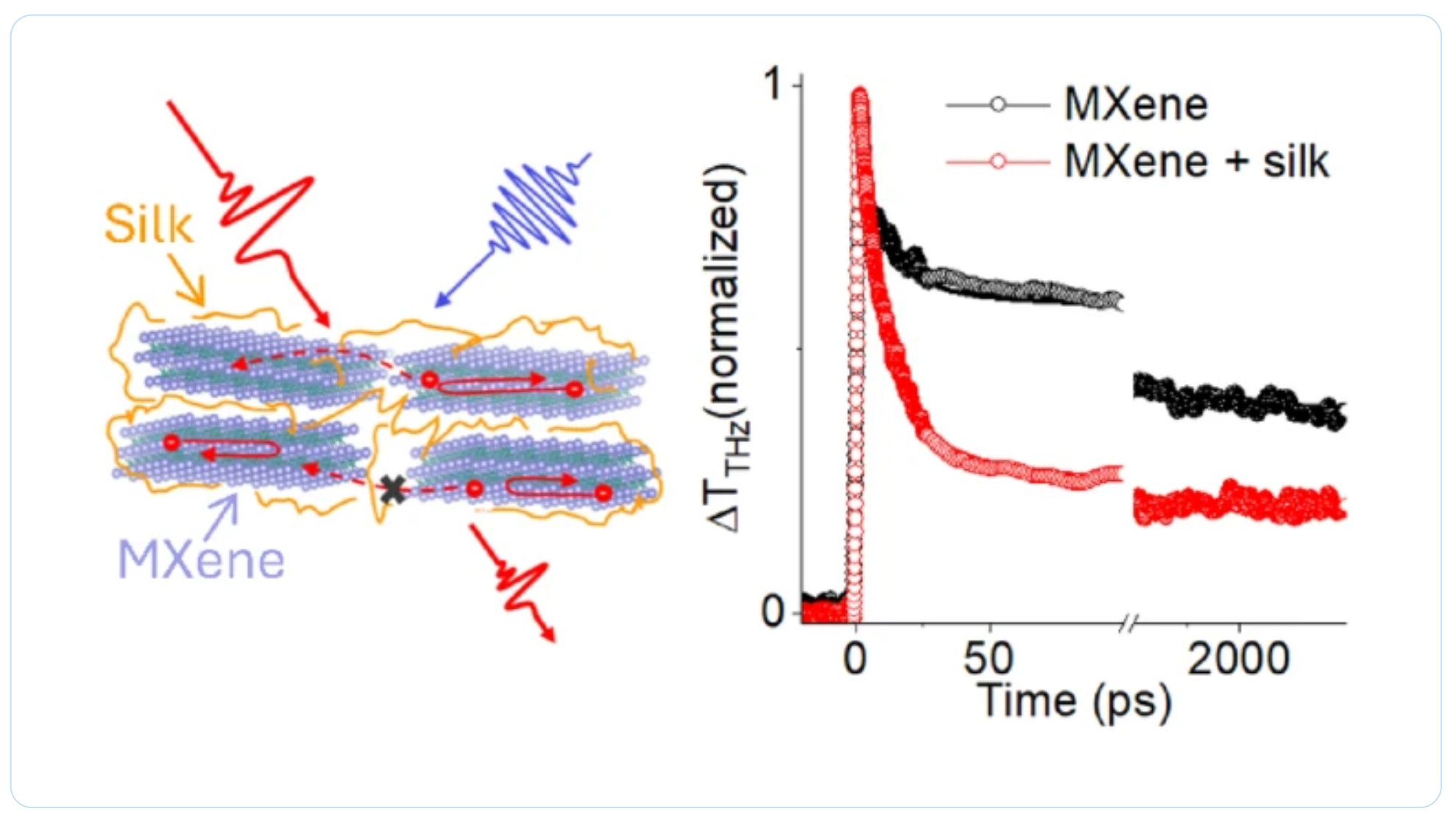 Thank you to our collaborators for the amazing joint work recently published in Graphene and 2D Nanomaterials about MXene–silk fibroin composite films aiming to develop materials with tunable electronic and thermal properties
Thank you to our collaborators for the amazing joint work recently published in Graphene and 2D Nanomaterials about MXene–silk fibroin composite films aiming to develop materials with tunable electronic and thermal properties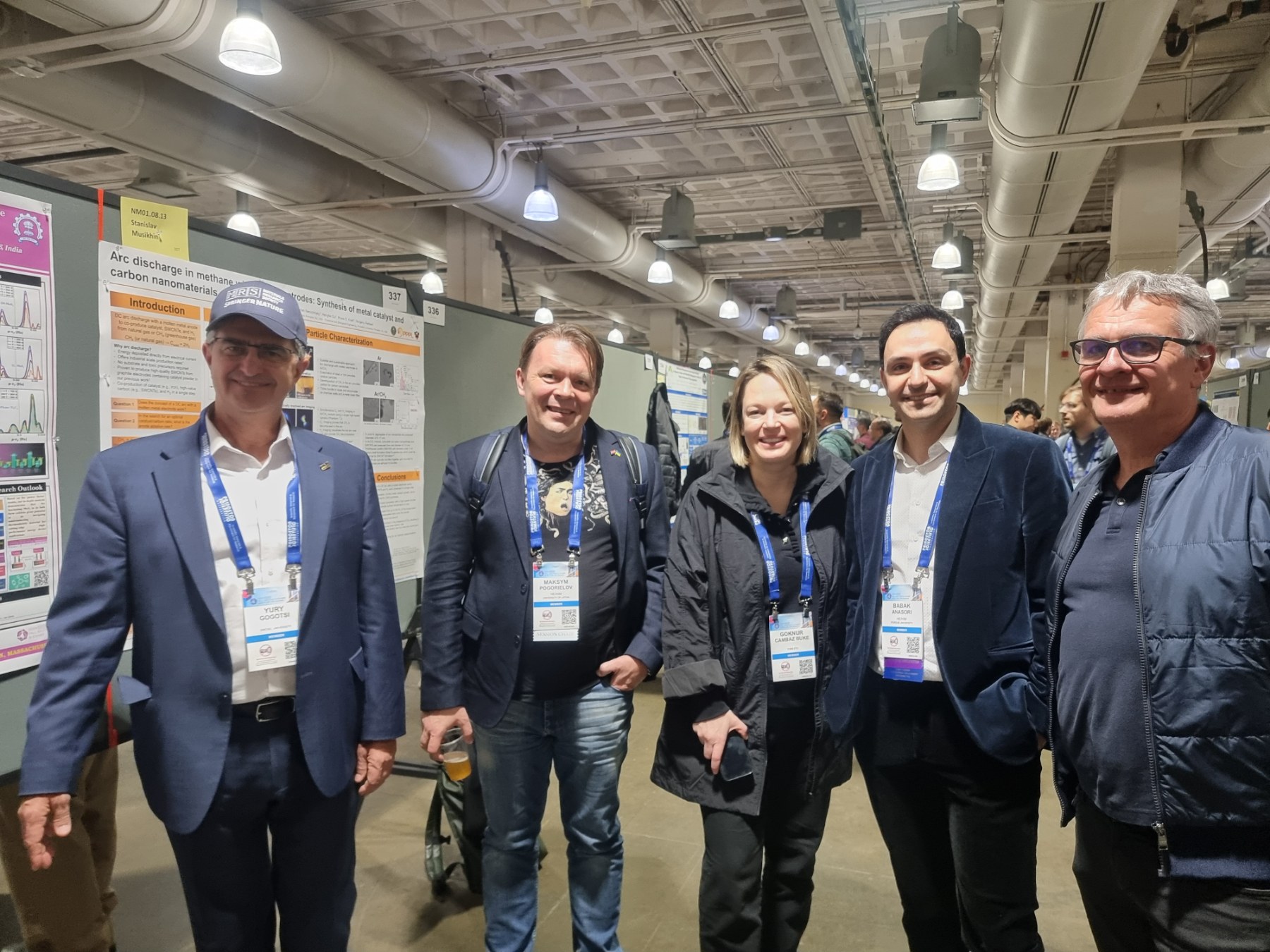 Dr. Oleksiy Gogotsi, director of MRC and Carbon-Ukraine, innovative companies that are among the leaders on the world MXene market, visited 2024 MRS Fall Meeting & Exhibit. together with Dr. Maksym Pogorielov, Head of Advanced Biomaterials and Biophysics Laboratory, University of Latvia.
Dr. Oleksiy Gogotsi, director of MRC and Carbon-Ukraine, innovative companies that are among the leaders on the world MXene market, visited 2024 MRS Fall Meeting & Exhibit. together with Dr. Maksym Pogorielov, Head of Advanced Biomaterials and Biophysics Laboratory, University of Latvia.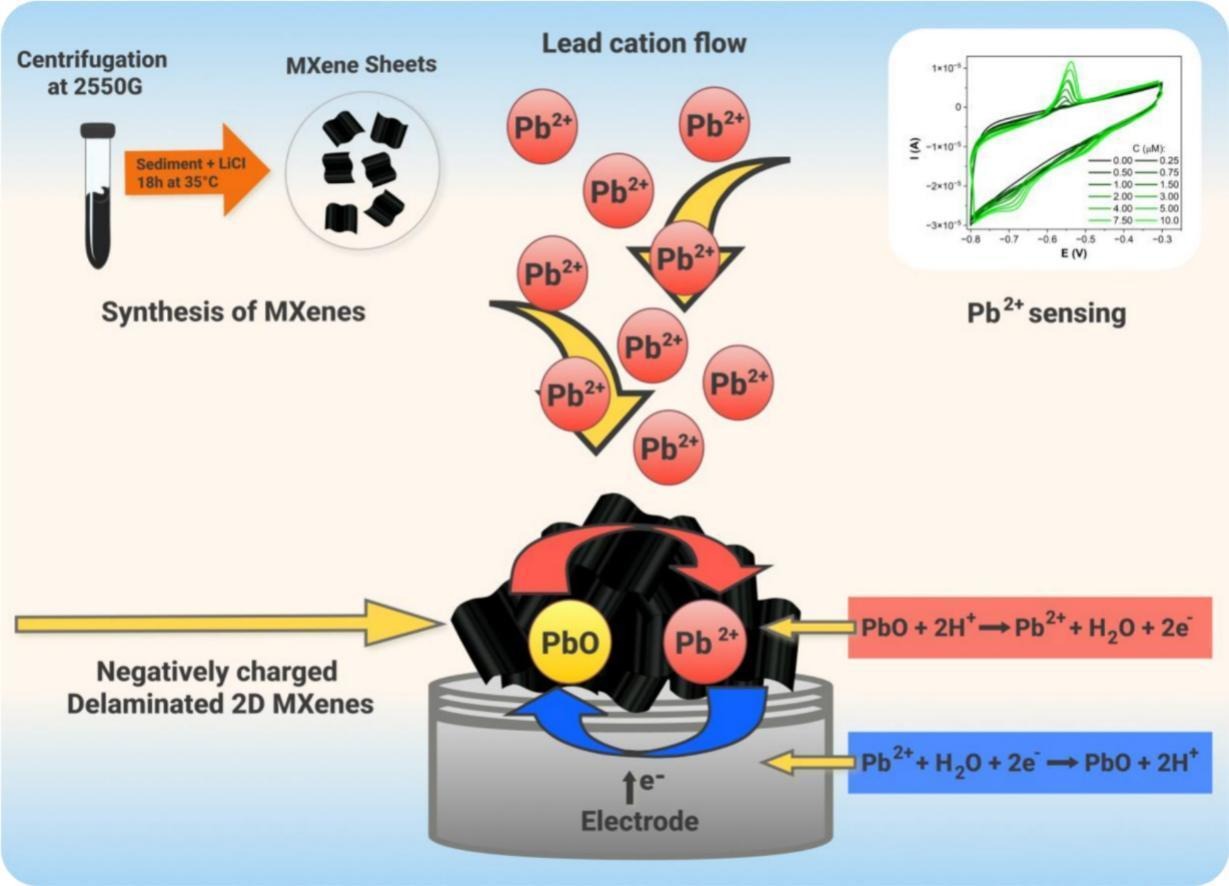
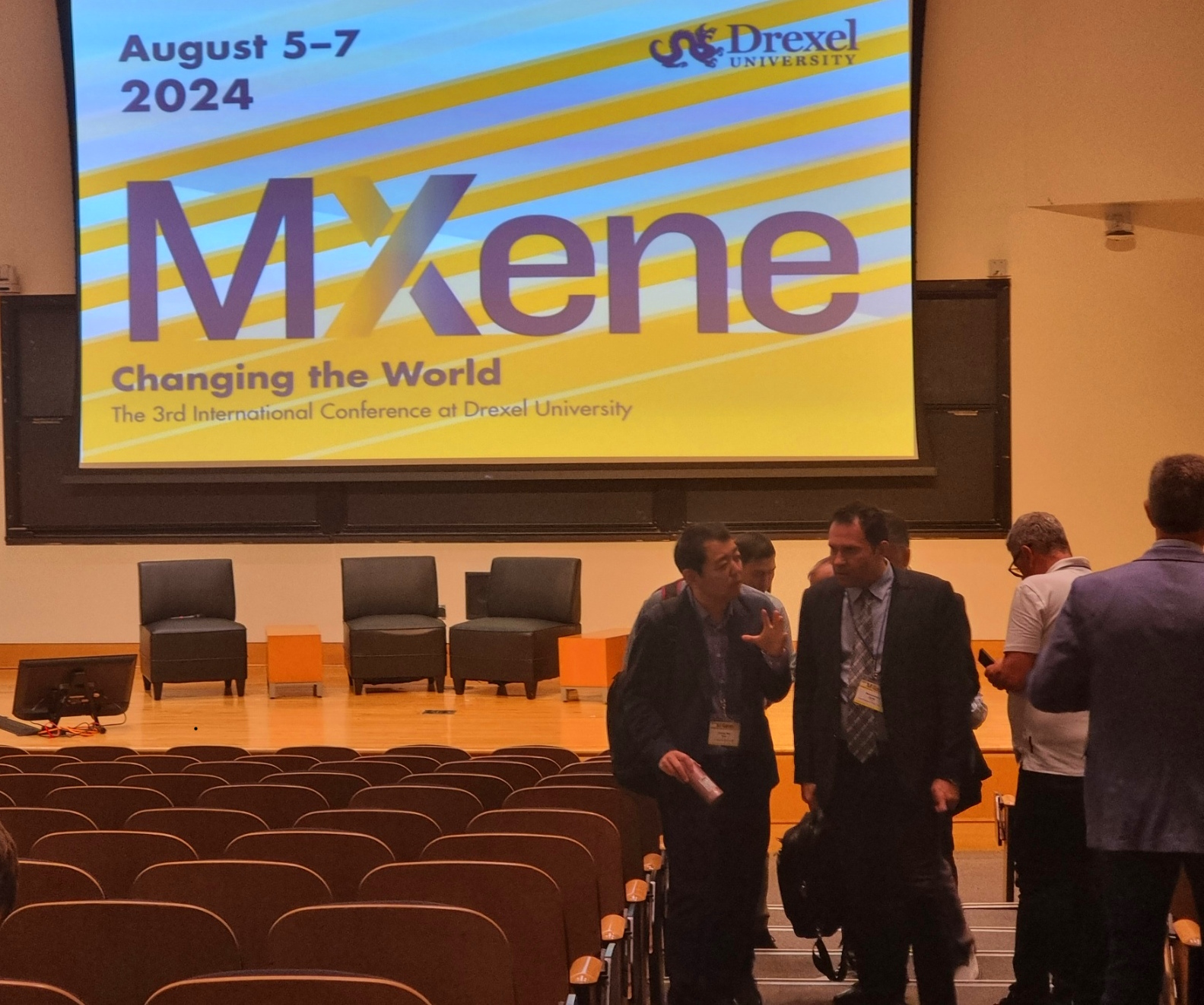 MRC and Carbon-Ukraine team visited the 3rd International MXene conference held at Drexel University on August 5-8, 2024. Conference brought together the best reserchers and leading experts on MXene field.
MRC and Carbon-Ukraine team visited the 3rd International MXene conference held at Drexel University on August 5-8, 2024. Conference brought together the best reserchers and leading experts on MXene field. 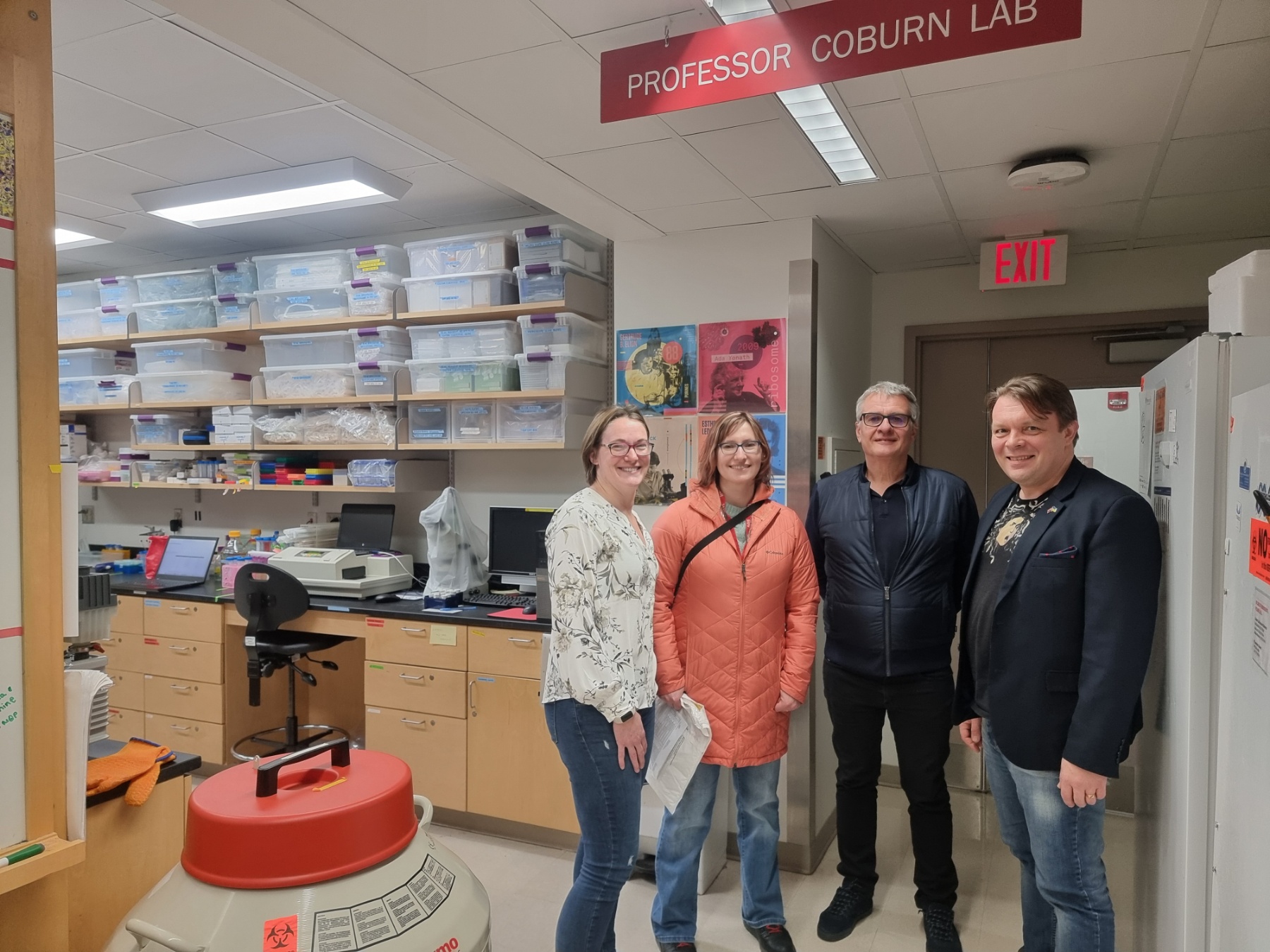
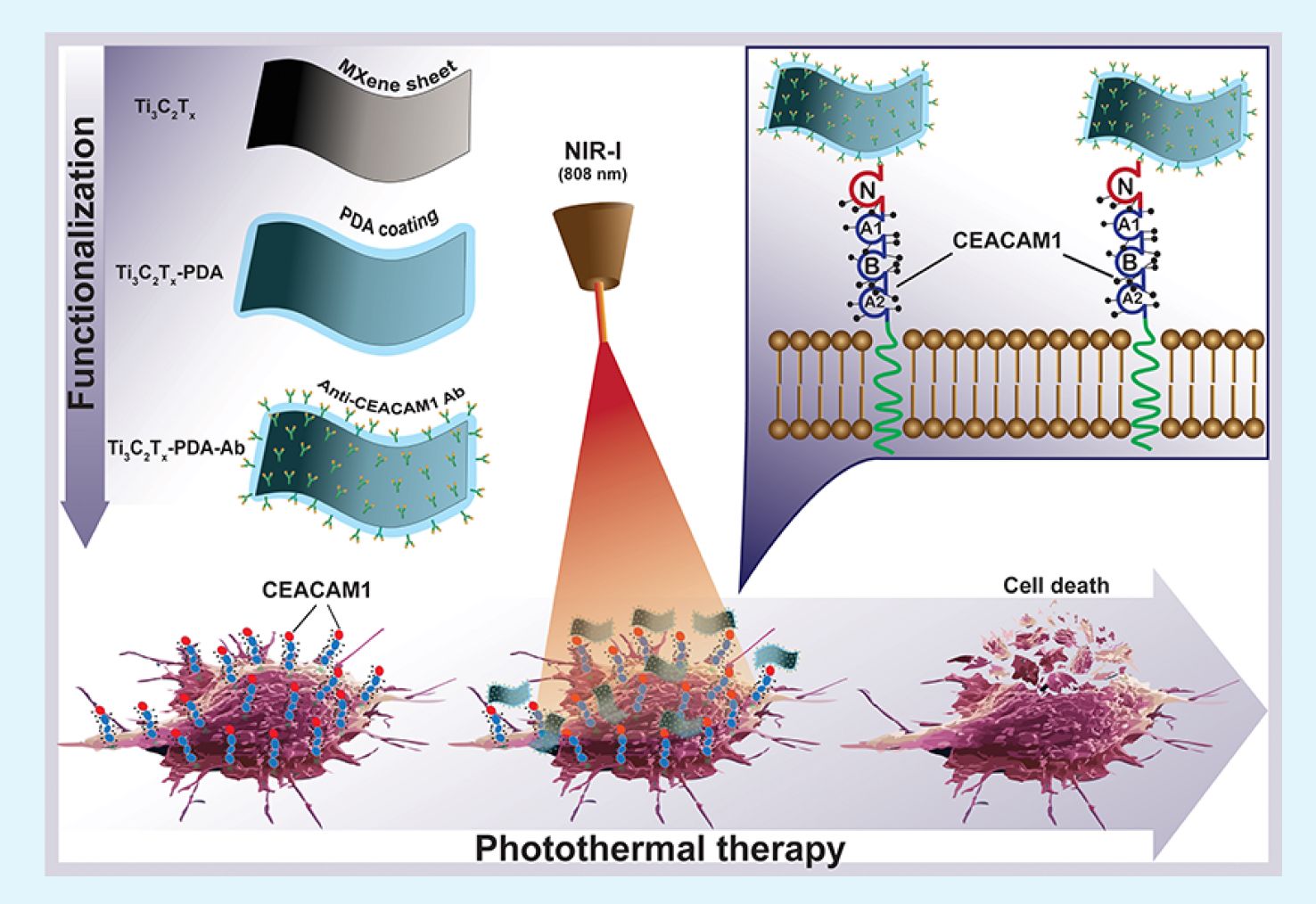 Together with colleagues from the University of Latvia, MRC/Carbone Ukraine, Adam Mickiewicz University, University Clinic Essen, and others, we have developed a novel concept involving the binding of antibodies to MXenes. In our research, we utilized anti-CEACAM1 antibodies to develop targeted photo-thermal therapy for melanoma (in vitro), paving the way for future in vivo studies and clinical trials. For the first time, we demonstrate the feasibility of delivering MXenes specifically targeted to melanoma cells, enabling the effective ablation of cancer cells under near-infrared (NIR) light. This new technique opens up vast potential for the application of MXenes in cancer treatment, diagnostics, drug delivery, and many other medical purposes.
Together with colleagues from the University of Latvia, MRC/Carbone Ukraine, Adam Mickiewicz University, University Clinic Essen, and others, we have developed a novel concept involving the binding of antibodies to MXenes. In our research, we utilized anti-CEACAM1 antibodies to develop targeted photo-thermal therapy for melanoma (in vitro), paving the way for future in vivo studies and clinical trials. For the first time, we demonstrate the feasibility of delivering MXenes specifically targeted to melanoma cells, enabling the effective ablation of cancer cells under near-infrared (NIR) light. This new technique opens up vast potential for the application of MXenes in cancer treatment, diagnostics, drug delivery, and many other medical purposes.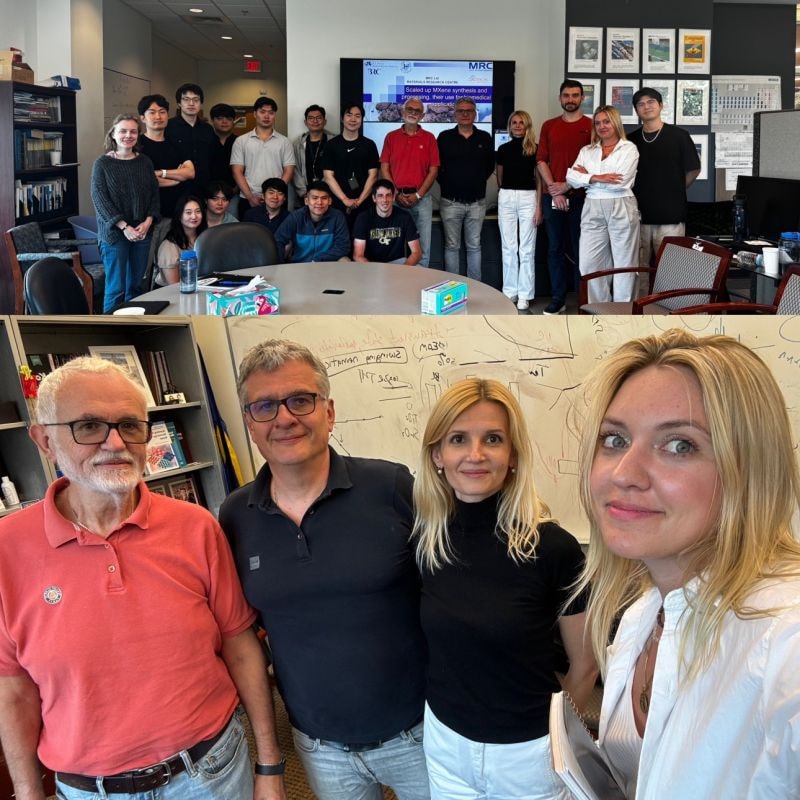

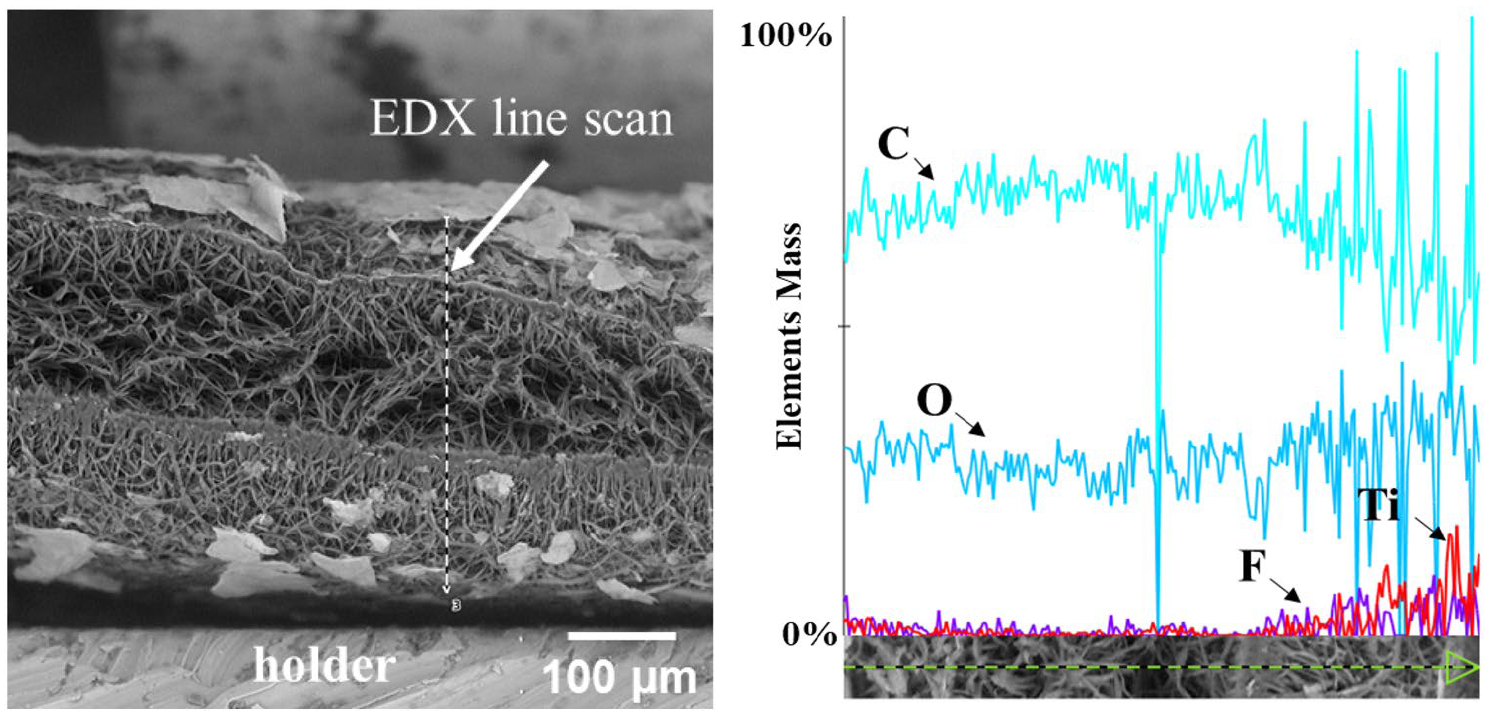 Here we demonstrate a new developed method for depositing Ti3C2Tx MXenes onto hydrophobic electrospun PCL membranes using oxygen plasma treatment. These novel patches hold tremendous potential for providing mechanical support to damaged heart tissue and enabling electrical signal transmission,thereby mimicking the crucial electroconductivity required for normal cardiac function. After a detailed investigation of scaffold-to-cell interplay, including electrical stimulation, novel technology has the potential for clinical application not only for cardiac regeneration, but also as neural and muscular tissue substitutes.
Here we demonstrate a new developed method for depositing Ti3C2Tx MXenes onto hydrophobic electrospun PCL membranes using oxygen plasma treatment. These novel patches hold tremendous potential for providing mechanical support to damaged heart tissue and enabling electrical signal transmission,thereby mimicking the crucial electroconductivity required for normal cardiac function. After a detailed investigation of scaffold-to-cell interplay, including electrical stimulation, novel technology has the potential for clinical application not only for cardiac regeneration, but also as neural and muscular tissue substitutes.